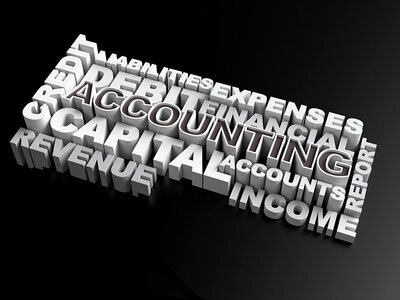Working Capital: What's the Big Deal Anyway?
If you are a business owner seeking financing, in most situations lenders or investors will inevitably ask about your working capital. In our latest blog, we discuss why working capital is top of mind for lenders and investors and how you as a business owner or founder can prepare yourself for questions on this topic.
In its simplest form, working capital is your businesses short-term assets less short-term liabilities.
Working capital includes accounts receivable, inventory, customer deposits and advances, accounts payable, short-term tax assets and liabilities, as well as any short-term operating facilities (i.e. debt) held by your company.
Collectively, the ebb and flow of these accounts is what creates the necessary cash flow to manufacture your firm’s products or services.
The timing of these flows from initial customer contact, through to service or product delivery, and revenue collection, is known as your cash conversion cycle (CCC).
The cash conversion cycle is typically broken into three parts:
Part I - A business signs a new customer contract, followed by the receipt of an initial retainer (e.g. lawyers), or deposit (e.g. contractors). If a product is being manufactured, inventory must be purchased to fulfill the order and to manufacture the product. In a service business, labor costs would be a proxy for inventory.
The time between when inputs (labour and materials, i.e. your cost of goods sold) are ordered and used, and the time they are due to be paid for, is called Days Payables Outstanding, or DPO.
Mathematically, the formula looks like this:
In each case, any shortfall between what deposits or retainers were collected at the outset of a customer contract plus existing cash balances of the business, will be covered by operating facilities and supplier (vendor) terms (i.e. accounts payable).
Part II - The quicker a business procures inventory, manufactures a product and gets a finished good out the door, the quicker a businesses cash conversion cycle, all else equal. Further, reducing or minimizing dead stock or obsolete inventory, will help to improve this ratio.
This is known as Days Inventory Outstanding, or DIO.
Mathematically, the formula looks like this:
Part III - Once the good or service has been manufactured or provided to the customer, an invoice will be issued for payment to the client (i.e. an account receivable is created). The client will have anywhere from 30 to 90 days to pay the invoice based on agreed terms.
This is known as Days Sales Outstanding, or DSO.
Mathematically, the formula looks like this:
The Sum of All Parts - putting these three formulas together, you get your cash conversion cycle, calculated as:
DSO + DIO – DPO = Businesses Cash Conversion cycle.
In a nutshell, this formula tells you how long (in days) it takes your company to convert a customer order to a closed sale.
Why is the CCC important to me as a business owner, and how do lenders use this information?
Foremost, your CCC is most helpful when tracked over a period of time, say monthly or weekly, for a year or more.
In visually inspecting the change in these three ratios over time, you may notice where perhaps your firm is paying your suppliers too quickly (versus the industry average), not collecting your receivables quickly enough (thereby relying on operating facilities to fund operations) or that inventory is building up (versus being sold). Ultimately, you are looking for ways to speed up cash collection (i.e. reduce your CCC) in order to reinvest your cash flow in new inventory, goods or people, to grow sales.
Further, when analyzing these ratios, as a business owner you should look to peer comparables to benchmark your operations against those of your industry.
From a lenders perspective, they will often look at your CCC through the same lens as described above. They will look for stable or improving ratios, indicating a healthy cash conversion cycle over time. With the exception of highly cyclical businesses, lenders will be looking for small variances in these ratios.
In recap, having a solid understanding of your businesses working capital is key! Analyzing your cash conversion cycle, over a period of time, will tell you where cash flow could be freed up by leaning more on vendors, speeding up receivables collections, &/or liquidating new (and old) stock more quickly. Finally, it’s important the CCC be looked at, and analyzed, frequently. The value in the analysis lies in identifying variances from the norm so that action can be taken, versus waiting till quarter or year-end.
If you’re looking at financing some working capital, either through a traditional operating facility, asset-based loan, or alternative debt, we’d be happy to talk to you about some options.
Cheers, Trevor
Founder & Managing Director
Copyright 2019 Kaeros Capital Advisors Inc.





